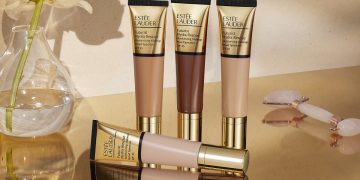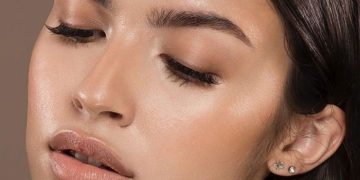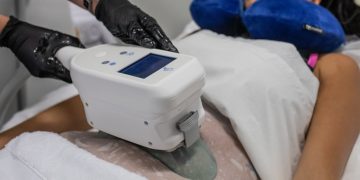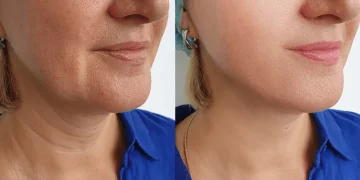Facial aesthetics have always been at the forefront of beauty treatments, and the quest for a youthful appearance has led to an array of procedures designed to turn back the clock. Facelifts, both surgical and non-surgical, are among the most popular methods to combat the signs of aging. These treatments aim to restore the firmness, elasticity, and vibrance of the skin that diminishes as we grow older. In this article, we will explore the differences between traditional (surgical) facelifts and non-surgical facelifts, comparing their effectiveness, recovery times, risks, and ideal candidates to help you make an informed decision about which is best for you.
Introduction: Overview of Facelifts (Surgical vs. Non-Surgical)
A facelift is a cosmetic surgery designed to reduce visible signs of aging by lifting and tightening the skin of the face and neck. Surgical facelifts, also known as rhytidectomy, are considered one of the most effective and long-lasting solutions to combat sagging skin, deep lines, and wrinkles. However, many people seek alternatives to surgery due to the invasive nature, cost, and recovery time associated with these procedures.
In response to this demand, non-surgical facelifts have emerged as an appealing option. Non-surgical facelifts encompass a variety of treatments, such as Botox, dermal fillers, thread lifts, and ultrasound-based therapies. These procedures provide an opportunity to achieve a rejuvenated look without the need for surgery or extended downtime. While non-surgical facelifts are not as dramatic as their surgical counterparts, they offer a less invasive, faster solution to those looking for subtle yet effective facial enhancement.
In the following sections, we will examine the different non-surgical facelift methods, compare their effectiveness to traditional facelifts, and explore the ideal candidates for each type of procedure.
Non-Surgical Facelift Methods: Botox, Fillers, Thread Lifts
- Botox
Botox, or botulinum toxin, is one of the most popular non-surgical facelift treatments. This injectable treatment works by temporarily paralyzing the muscles beneath the skin to reduce the appearance of wrinkles and fine lines. Botox is most commonly used to target forehead lines, crow’s feet, and frown lines, providing a smoother, more youthful look.
One of the major benefits of Botox is its minimal downtime. The procedure is quick, typically taking less than 30 minutes, and there is no recovery period required. Patients can resume their normal activities immediately following the treatment. Botox results usually appear within 3 to 5 days, and the effects can last anywhere from 3 to 6 months.
However, Botox does have its limitations. It primarily targets dynamic wrinkles caused by facial muscle movement, so it may not be as effective for deeper static wrinkles or sagging skin. Furthermore, the effects are temporary, meaning that repeat treatments are necessary to maintain the desired results.
- Dermal Fillers
Dermal fillers are injectable substances used to restore volume and smooth out wrinkles, primarily in areas such as the cheeks, nasolabial folds, and under the eyes. Fillers, such as hyaluronic acid, calcium hydroxyapatite, or poly-L-lactic acid, are designed to fill in areas that have lost volume due to aging or weight loss, giving the face a fuller, more youthful appearance.
One of the major advantages of dermal fillers is their ability to address a broader range of concerns. Unlike Botox, which only targets wrinkles caused by muscle movement, dermal fillers can treat volume loss, deep lines, and sagging skin. The treatment is typically quick, with minimal discomfort, and there is little to no downtime afterward.
Fillers provide immediate results, and the effects can last anywhere from 6 months to 2 years, depending on the type of filler used. However, like Botox, the results are not permanent, and repeat treatments are required to maintain the results.
- Thread Lifts
Thread lifts are another non-surgical facelift option that has gained popularity in recent years. This procedure involves the insertion of dissolvable threads beneath the skin that lift and tighten the facial tissues. The threads stimulate collagen production in the skin, leading to a natural tightening effect.
Thread lifts are an appealing option for those looking for a non-invasive solution to sagging skin and mild to moderate facial laxity. The procedure is performed under local anesthesia, and the threads are typically inserted through small incisions in the skin. The entire process takes about 30 to 60 minutes, and while the recovery time is minimal, some swelling and bruising may occur.
The results of thread lifts are visible almost immediately, with continued improvement over the next several months as collagen is produced. The effects can last anywhere from 1 to 3 years, depending on the individual and the type of threads used. However, thread lifts may not be suitable for individuals with significant skin laxity, and the results are generally less dramatic than a traditional facelift.
Effectiveness: Immediate Results vs. Long-Term Benefits
When it comes to effectiveness, traditional facelifts and non-surgical facelifts offer distinct advantages, depending on the goals and expectations of the patient. Surgical facelifts are known for their dramatic and long-lasting results, providing patients with a rejuvenated appearance that can last for up to 10 years or more. The procedure involves tightening and lifting the underlying facial muscles and tissues, removing excess skin, and repositioning facial features. As a result, it addresses both deep wrinkles and significant skin sagging, delivering more noticeable and lasting improvements than non-surgical options.
In contrast, non-surgical facelifts offer immediate results with minimal downtime but do not provide the same level of transformation. Botox and fillers typically provide subtle improvements to fine lines and wrinkles, while thread lifts offer moderate lifting effects. However, these treatments are temporary, and their results usually last between 6 months and 2 years. Non-surgical facelifts are ideal for individuals seeking less dramatic changes and those who are not yet ready for the commitment or risks associated with a traditional facelift.
For those seeking a balance between effectiveness and convenience, non-surgical facelifts offer a solution that allows for gradual, natural-looking improvements without the need for surgery. While the results may not be as permanent or dramatic as those of a surgical facelift, they can still significantly enhance one’s appearance, especially for individuals with mild to moderate signs of aging.

Ideal Candidates: Best Options for Different Skin Types
Choosing the right facelift method depends largely on the patient’s skin type, aging concerns, and personal preferences. Surgical facelifts are ideal for individuals who have significant skin sagging, deep wrinkles, or excess skin. These patients typically have more advanced signs of aging and may require a more substantial and lasting solution to achieve their desired results.
On the other hand, non-surgical facelifts are best suited for individuals with mild to moderate aging signs, such as fine lines, volume loss, and slight sagging. These patients may not yet require or desire the dramatic changes that a surgical facelift would provide but still want to address early signs of aging. Non-surgical treatments are also great for those who want a temporary, non-invasive option with minimal recovery time.
For individuals with different skin types, the choice of non-surgical method may vary. Botox is ideal for those with dynamic wrinkles and relatively smooth skin, while dermal fillers are perfect for individuals experiencing volume loss or deep wrinkles. Thread lifts can benefit individuals with mild skin laxity but may not be appropriate for those with more advanced sagging.
Risks and Recovery: Comparison of Downtime and Complications
One of the primary advantages of non-surgical facelifts is the minimal downtime required after the procedure. Botox and dermal fillers involve little to no recovery time, and patients can resume normal activities immediately following the treatment. Some swelling, bruising, or redness may occur at the injection site, but these side effects are usually short-lived. The recovery time for thread lifts is also minimal, with most patients returning to their usual routine within a few days.
In contrast, traditional facelifts involve a more extensive recovery process. Patients may experience swelling, bruising, and discomfort, which can last for several weeks. The surgical procedure itself requires general anesthesia and involves more significant incisions, which leads to a longer healing time. Full recovery from a surgical facelift typically takes several months, during which patients are advised to avoid strenuous activities and follow strict post-operative care instructions.
While both non-surgical and traditional facelifts come with certain risks, such as infection, scarring, and allergic reactions, the risks associated with non-surgical facelifts are generally lower. Non-surgical procedures tend to have fewer complications and a quicker recovery time, making them a safer option for individuals who are not ready for the potential risks of surgery.
Conclusion: Which Option is Better for You?
The decision between a non-surgical facelift and a traditional facelift ultimately depends on your individual goals, skin concerns, and lifestyle. Non-surgical facelifts are an excellent option for individuals seeking subtle, gradual improvements to fine lines, wrinkles, and volume loss with minimal downtime and risk. Botox, dermal fillers, and thread lifts offer quick and effective results that can help maintain a youthful appearance without the need for surgery.
However, if you are looking for more dramatic, long-lasting results and are willing to invest in a more invasive procedure, a traditional facelift may be the better choice. Surgical facelifts are ideal for individuals with advanced aging signs who want a comprehensive and permanent solution to sagging skin and deep wrinkles.
Before making your decision, it is important to consult with a board-certified cosmetic surgeon or dermatologist who can assess your skin type, aging concerns, and personal preferences. They can help guide you in choosing the best facelift method for your specific needs, ensuring that you achieve the results you desire with minimal risks and complications.












































